If you’ve ridden a motorcycle long enough, you’ll agree, the most irritating part is getting dandruff in your helmet. It’s also not the most pleasant subject to talk about.
Now, if your thinking that it’s just you, then worry not, it’s very common. You’ll usually find it builds up after long periods of wearing a helmet or riding under very sweaty conditions.
I’ve had this problem before, after long weekends of vigorous off-road riding. You know, when your helmet is a bucket of sweat when you take it off.
So what can you do about it?
Every motorcycle rider must wear a helmet to protect his head in case of an accident. So, not wearing one is not an option.

Riding without a helmet should not be an option
First, let’s figure out what it is and why it happens.
What is Helmet Dandruff?
For the sake of a complete article here is a common dictionary explanation. “loose scales of dry dead skin shed from the scalp” Source Dictionary.com
Well … it turns out that Dandruff is actually “hundreds” of tiny pieces of dead skin that build up in your hair. From a distance it appears like white hair. It occurs when a large amount of skin has died and come off.
The constant itching is very irritating because it drives you to keep scratching your head. The more you itch, the worse it gets. It really doesn’t make you feel good, especially when you’re not wearing the helmet and your hair looks dirty.
Above all, trying to scratch your head while riding can cause you to lose focus and could result in an accident.
Causes of Dandruff in Your Helmet
According to medical experts, the condition is called; seborrheic dermatitis. This can appear when heat accumulates inside the helmet. The heat causes you to sweat which increases the level of humidity in the helmet. The heat and sweat create a favorable environment for dandruff to accumulate.
This is similar to other related conditions like “jock itch” or “athletes foot”.
Riders that don’t travel frequently never experience this problem. This is because they only wear a helmet for a very short period of time.
The heat and humility causes a kind of fungus to grow (called: Malassezia) that irritates the skin and causes it to itch and flake off. When dead skin comes off, it normally attaches itself to the hair, but with time, it accumulates on the helmet.
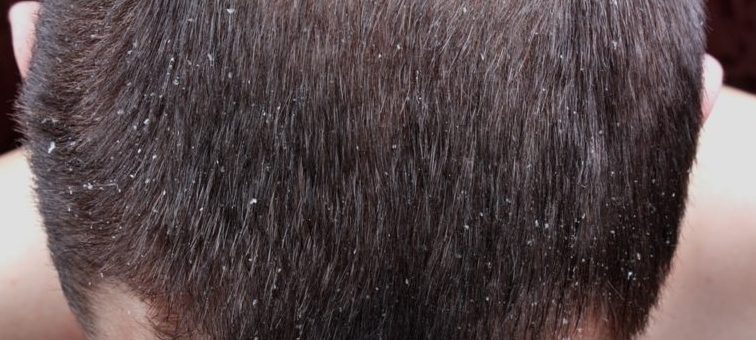
A head of hair full of dead skin flakes – aka Dandruff
Dealing with Helmet Dandruff and Stop Helmet Itch
When you have dandruff, you just want to eliminate it once and for all. Some riders think about throwing away their helmet and buying a new one. Nice!
Well, that might help solve the problem for a while. But are you going to dispose of every helmet that gives you helmet itch? Maybe if you’re filthy rich
Regular helmet cleaning and maintenance might offer a viable alternative.
The solution to dandruff lies in knowing what caused it in the first place. Otherwise, you might try a million solutions but the dandruff will not go away.
Chances are that wearing a helmet could just be half the issue.

You’ll be happy when you stop helmet itch
How To Stop or Prevent Helmet Dandruff
1. Use an Anti Dandruff Shampoo
The best success I’ve had is a couple of treatments of T/Gel Coal Tar Shampoo. It stinks a bit, but works great. (Only use it when you need it, not every day)
There are loads of other anti-dandruff treatments on the market, here’s a few worth mentioning.
- Menthogen Anti Itch Scalp Treatment Set Spray (I’ve not used – but have heard good reports about it)
- Nizoral Anti Dandruff Shampoo (also personally used this product with good results)
A Few more that maybe good…
2. Check your Shampoo
Choosing the wrong shampoo may also be part of the problem. If you’re using a shampoo to wash your hair, chances are that product might be highly concentrated that causes your scalp to experience a reaction to the chemicals. This can also cause the skin to flake.
Using a mild Shampoo could fix the problem. Go for a shampoo that has minimum irritants, or contains more natural ingredients.
Don’t use ‘dry hair’ products: (EG: Shampoos that say ‘for dry hair’) These products don’t wash the skin and hair follicles properly, but, rather clump the oil, dirt and chemicals, which over time can irritate the scalp.
Less is more: Don’t use excessive amounts of shampoo, just enough for you to lather up. And make sure you rinse well, so, you do not leave any residue on your scalp.
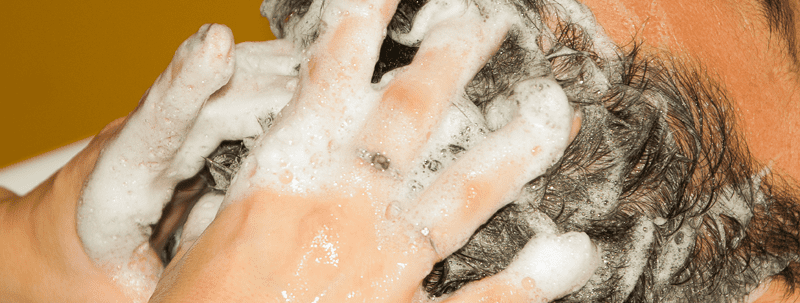
Using the right shampoo in the right quantity can really help
3. Clean Your Helmet Lining
A dirty motorcycle helmet provides a breeding ground for fungus that cause dandruff. Most riders only wash the outer shell of the helmet but ignore the inside.
Some helmets come with removable liners. You can therefore remove the inside lining and wash it thoroughly using mild detergent. On the other hand, if the lining is permanently fitted on the helmet, simply clean it with a wet cloth.
Don’t leave soap residue on helmet interior: When cleaning the inside lining, make sure you rinse it thoroughly. This ensures there are no traces of soap or detergent on the helmet. When soap residue mixes with sweat, this causes the fungus to accumulate in the helmet and causes itching.
Allow the helmet lining to dry: Always take your helmet outside to dry in the sun. If the inside lining doesn’t dry well it can cause fungus to build. Water can pool in one area, so you might need to turn the helmet a few times to get it dry.
4. Try not to Scratch that Itch
Keep scratching to a minimum: It’s obvious you will scratch your head when it feels itchy. While doing so is satisfying, it can make things worse.
Never scratch when riding: Trying to reach for that itch while cruising can cause you to lose control of the bike. If you really have to scratch, just stop by the roadside and do your thing without risking your life.

Looking for some alternative solutions to helmet dandruff itch
5. Alternative Solutions to Reduce Helmet Dandruff
- Trim your hair: This could be an issues for some motorcycle enthusiast. Just remember though, heat and humidity in the helmet amounts to dandruff.
- Wear a cotton skull cap or bandana: Create some kind of lining inside the helmet, or wear some thin cotton headgear.
- Wear correctly fitted helmets: A tight helmet will cause you to sweat more then a well fitted helmet.
- Keep helmet away from pets: If you have dogs and cats at home, just keep the helmet out of their reach. Pets can leave bacteria in the helmet that cause fungi to build up. Cats can literary lie on the inner cover and leave their fur there.
- Keep helmet aerated: Make a habit of keeping the helmet’s windshield raised to allow fresh air to circulate inside.
- Do some more research: Check out some medical websites to learn more about alternative remedies.
Conclusion
While the exact cause of dandruff may not be entirely clear, we hope we have provided you some positive things that any motorcycle enthusiast can have a shot at.
Please remember, if you have tried everything and you still have problems with dandruff, you could also see your local physician.
If you have any home remedies just let us know in the comments below. Safe riding.

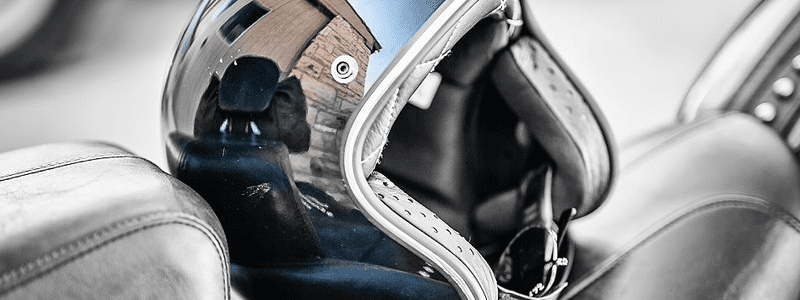






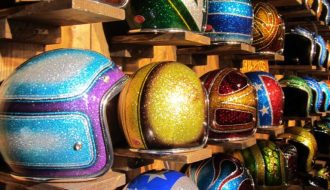
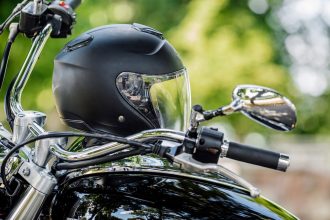




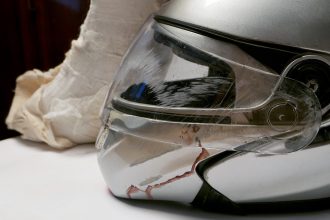
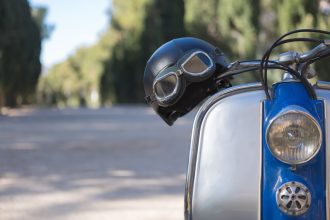




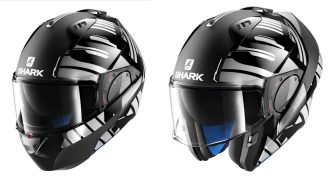
2 Comments